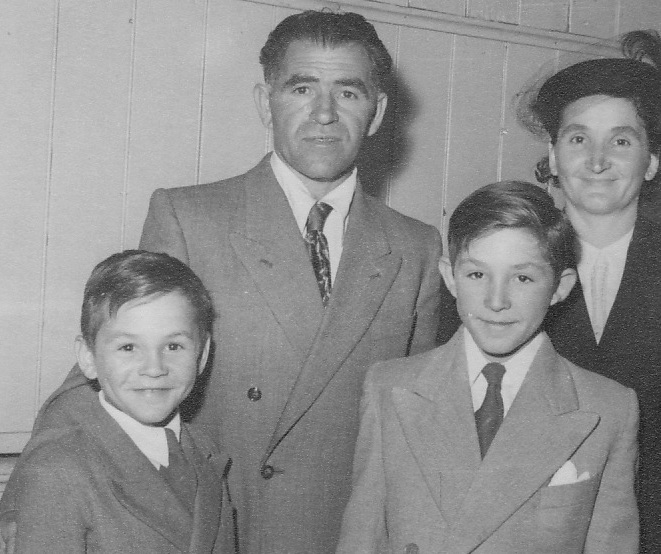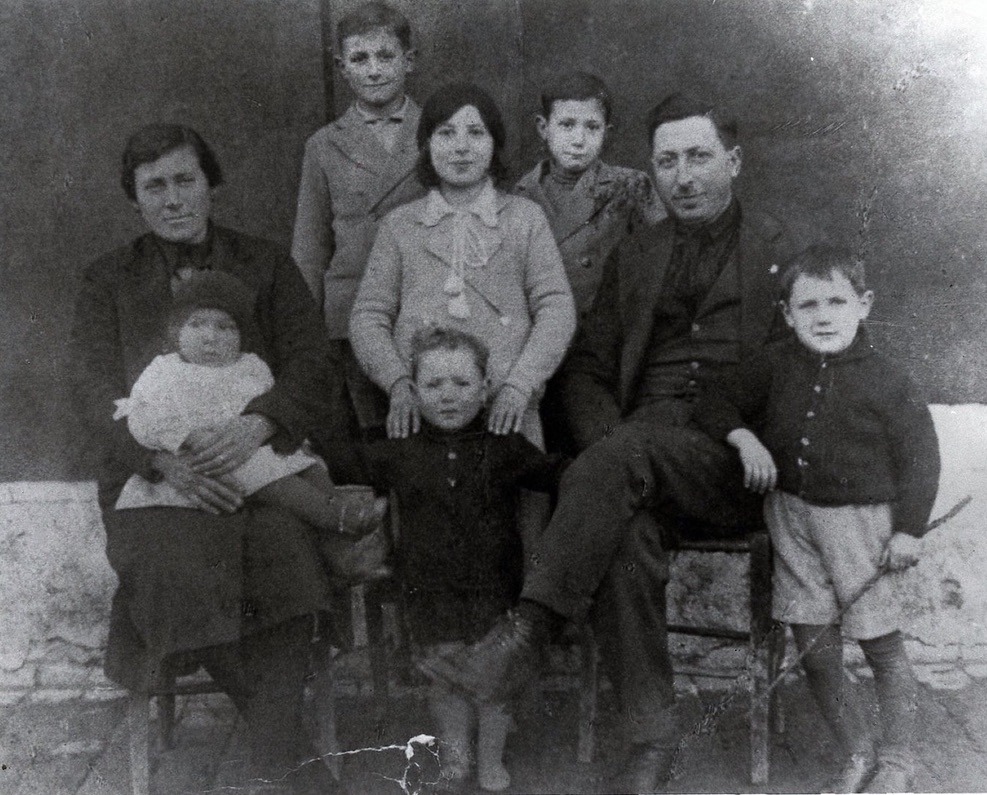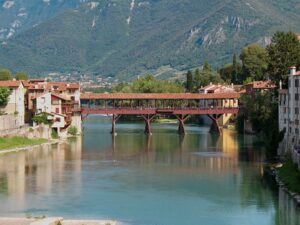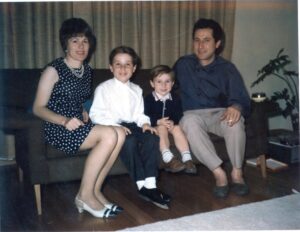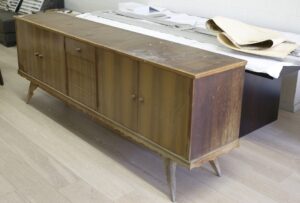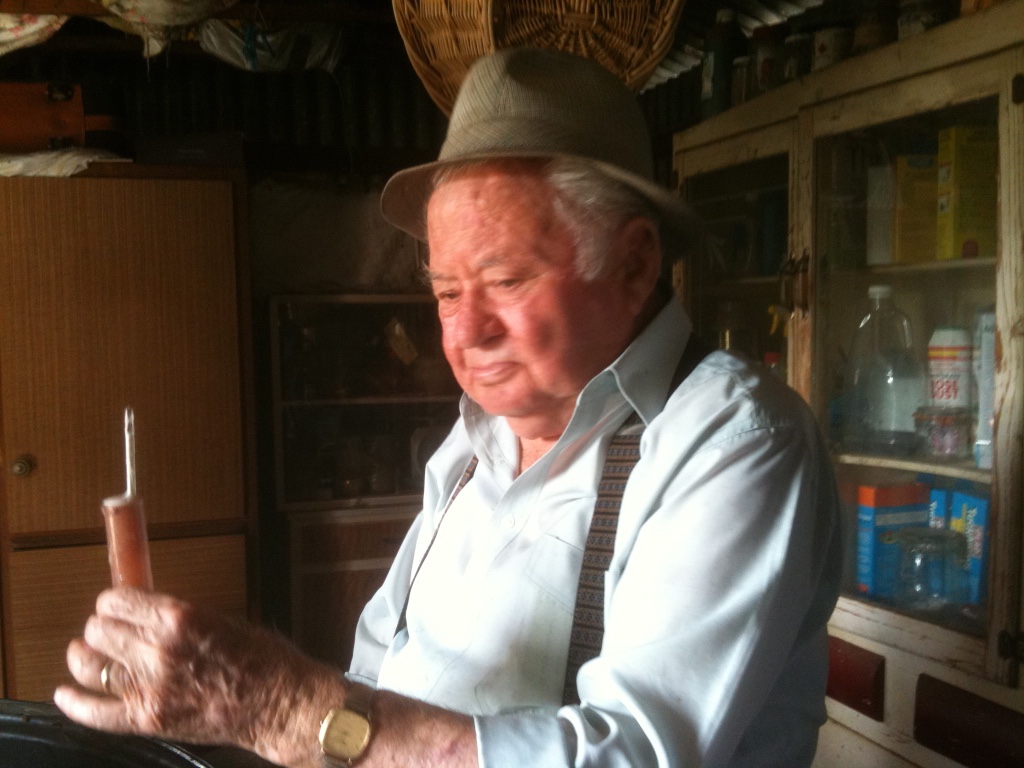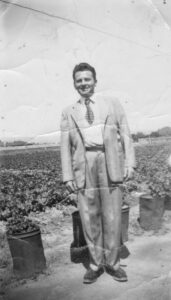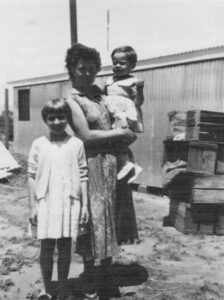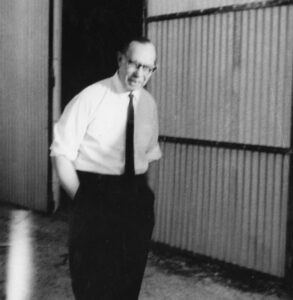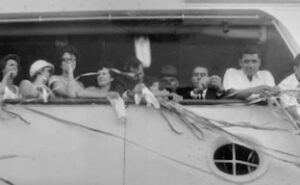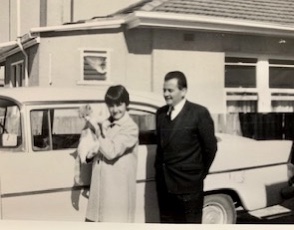In 1984 Vittorio Marchioro and Angelina Marchioro recorded oral history interviews for the Migrant Oral History Project in Adelaide They are the only pioneers in the Veneto market gardener community whose voices have been preserved for the future. Their interviews are in the State Library of South Australia.
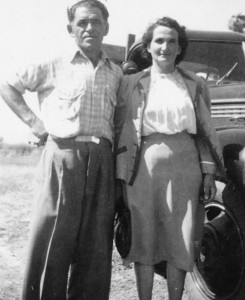
Vittorio was born 23 December 1906 in Malo in the province of Vicenza, 110 kilometres north west of Venice. In 1927 when he was 21, he migrated to Australia, sponsored by his brother Francesco who had arrived a year earlier with his wife and baby. Vittorio tried to find work but times were difficult for most people in Australia and if you were a migrant who did not speak English, it was even more challenging because of the widespread unemployment during the Depression. He had a few jobs including some concrete work with his brother’s brother-in-law and he worked in Rushworth in north-east Victoria cutting wood for which he received very little pay.
In 1934, Vittorio leased land with his brother and sister-in-law, Margherita on Frogmore Road near other Veneto men who were establishing market gardens. Vittorio and Margherita grew cabbages, cauliflower, potatoes, trombone and tomatoes while Francesco worked in the city with his brother-in-law. Vittorio said:
I … buy one horse, a plough, I got a little shed … to sleep in and [we had] 12 acres.
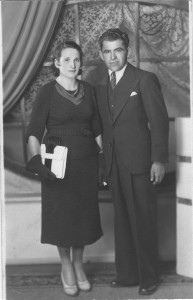
In 1937 when he was more established, Vittorio decided it was time to marry and he wrote to his sister in Malo and asked if she knew a young woman who might want to marry and live in Australia. Angelina (born 7 April 1914 in another unrelated Marchioro family), agreed with the idea. She married Vittorio by proxy in August 1937. In her interview Angelina recalls that within two days of arriving, she was working on the market garden taking down glasshouses at the end of January on a day of 37 degrees!
Vittorio and Angelina had two sons: Johnny was born in 1940 and Romano in 1942.
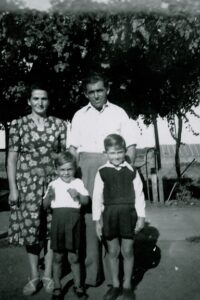
In 1948 the family moved from Frogmore Road to White Avenue, Lockleys, on the other side of the river and started a market garden where Vittorio and Angelina worked together until 1968. Johnny also assisted them until he married Eleonora Ottanelli in 1965 and they began to work their own market garden at Bolivar. Romano married Mirjana Stojanovic earlier in 1965. After a work accident his father-in-law invited Romano to work with him at the Barbeque Inn in Hindley Street in the city.
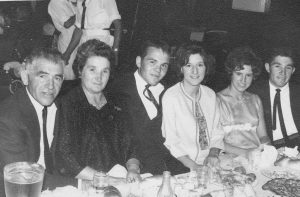
Although they worked hard, Vittorio and Angelina recalled the social life in the Veneto community of market gardeners in their interviews:
… a friend [had] a big truck, he picked up 15 people sitting in the truck [laughs]… Every first day of the year [we went] to Saint Kilda in a big truck, all the families and the children went to Saint Kilda, the beach. Every year for a long, long time …
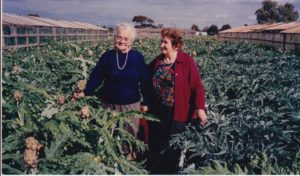
It was important for Vittorio and Angelina to keep in touch with their relatives in Malo and Monte di Malo, and they visited four times. The first time was in 1961 and they stayed six months. Some relatives including Vittorio’s sister and nephew also visited Adelaide in the 1970s.
After they sold their property at Lockleys, Vittorio and Angelina worked with Johnny and Eleonora at Bolivar two days a week for 20 years.
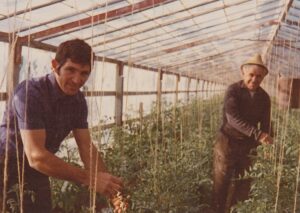
Vittorio died in 1992, and Angelina in 2002.
Romano died on 20 March 2020.
The Marchioro families in Adelaide and in the province of Vicenza continue to keep close contact.
You can listen to interviews with Johnny and Romano on the Marchioro webpage.
Madeleine Regan
14 June 2020
La famiglia di Vittorio & Angelina Marchioro
Nel 1984 Vittorio e Angelina Marchioro hanno registrato la storia orale delle interviste per il Progetto per la storia social per il museo storico nel Adelaide. Loro sono i soli pionieri del Veneto nella comunità degli agricoltori che le voci sono state conservate per il futuro. Le loro interviste sono nella biblioteca statale del Sud Australia.

Vittorio è nato il 23 dicembere 1906 in Malo nella provincia di Vicenza circa 75 chilometri nor-ovest di Venezia. Nel 1927 quando aveva 21 anni, è stato sponsorizzato dal fratello Francesco che arrivò in Adelaide un anno prima di lui con sua moglie e la sua bambina.
Vittorio provò a cercare lavoro pero i tempi erano difficili per tutti. Se eri un immigrante che non sapeva parlare l’inglese, era più difficile trovare lavoro durante la depressione. Lui è stato fortunato ad avere parecchi lavori includendo lavoro col cemento con suo cognato e lavorare anche a Rushworth nord-est Victoria tagliando legno per pochi soldi.
Nel 1934 Vittorio affittò terreno con suo fratello e sua cognata, Margherita in Frogmore Road vicino dove altri veneti vivevano e lavoravano. Vittorio e Margherita coltivaravano cavoli, cavofiori, patate, zucca e pomodori mentre Francesco lavorava in città con suo cognato. Vittorio ricorda:
… ho comprato un cavallo, un aratro, una piccola capannone per dormire e avevamo 12 acri …

Nel 1937 quando si era sistemato lui decise che era tempo che si sposasse così scrisse a sua sorella e chiese se conosceva una giovane che volesse sposarsi e venire a vivere in Australia. Angelina Marchioro (nata il 7 aprile 1914) si mise d’accordo e sposò Vittorio in procura nel agosto 1937. Nella sua intervista Angelina ricorda che in due giorni di tempo dal suo arrivo lei aiutò Vittorio a smontare le serre alla fine di gennaio 1938 – e faceva 37 gradi!
Vittorio ed Angelina hanno avuto due figli maschi: Johnny è nato nel 1940 e Romano nel 1942.

Nel 1948 la famiglia si trasferì da Frogmore Road a White Avenue Lockleys dall’altra parte del fiume. Cominciarono un market garden dove la coppia lavorarono insieme fino al 1968. Johnny lavorò con i suoi genitori fino a quando si è sposato con Eleonora Ottanelli nel agosto del 1965. La giovane coppia iniziò la loro attività nel terreno a Bolivar nord di Adelaide. Romano sposò Mirjana Stojanovic nel 1965 anche. Dopo che Romano ebbe un incidente al lavoro, il suocero lo invitò a lavorare con lui al Barbeque Inn in città di Adelaide.

Sebbene lavorarono duro, nelle loro interviste, Vittorio e Angelina si ricordano della vita sociale nella comunità veneti degli agricoltori:
… un amico aveva un camion e prendeva circa 15 persone [risatina] … ogni anno, il primo di gennaio andavamo a Saint Kilda. Tutte le famiglie con i loro figli andavano alla spiaggia. Ogni anno per un lungo tempo …

Era importante per Vittorio ed Angelina di restare in contatto con i loro parenti a Malo e Monte di Malo. Sono andati in Italia quattro volte a visitarli. La prima volta era nel 1961 e rimasero sei mesi. Altri parenti di Vittorio e Angelina sono venuti a fare loro visita in Adelaide.
Dopo aver finito di lavorare a Lockleys, Vittorio e Angelina lavorarono con Johnny e Eleonora a Bolivar due giorni alla settimana per circa 20 anni.

Vittorio morì nel 1992 ed Angelina nel 2002.
Romano è morto il 20 marzo 2020.
Le famiglie Marchioro di Adelaide e della provincia di Vicenza continuano a mantenere stretti collegamenti.
Puoi ascoltare le interviste con Johnny e Romano sulla pagina web di Marchioro.
Grazie a Graziella Ledda per l’assistenza con la traduzione.
Madeleine Regan
14 June 2020.
